Story:
Case Coelce - Inspiring Innovation for Traditional Work Environments
This Story portrays how an electricity distributor, located in the poorest region of Brazil, generate incremental innovations on a large scale, increasing the gain value and purpose of doing good for the stakeholders in the process.

Figure 1: Coelce´s Location
The Distribution segment Electricity in Brazil is modeled through concessions supply, in predetermined territorial regions, by contract with the Federal Government of the country. Under these contracts, there are legal limits for to provide new services to customers and consumers, of concession area. As a model very conservative and limited by their regulatory barriers, firms electricity distributors in Brazil, were limited to not invest in innovations aimed at new products and services. This focus led to attitudes of the segment, developing only technological innovations, so bureaucratic and regulated by the industry regulator, that are subsidized and inserted on concession contract itself.
Given this reality, how innovation was not encouraged, as occurs in other companies in other industries, Coelce´s employees believed that "innovation culture collaborative", was bureaucratic and discouraging.
Coelce, Companhia Energetica do Ceara, is a company that has, since 1998, the concession to operate in the public service of electricity distribution in the state of Ceará. Currently, the company is the only company that have licensee electricity distributor in the region, and has a monopoly for 30 years. Meets to three million units of electricity consumption, where 60% of these units are from customers with low purchasing power. It has 1,300 employees and own roughly 6,000 employees of service providers. Because of its concession contract, the legal limitations when developing new products and services, to target the market consumer, are the same existing in others companies on sector.
However, in 2000, Coelce through incentives / subsidies, could start their development process of Technological Innovations, with partnerships by companies or research centers, technology-based. But these incentives were not enough to change mind of employees about culture internal innovation. This it caused low index of contributions of employees, in the internal processes of generating ideas. Many of the staff believed that "innovation = more work" in their core activities, because they not saw it as a short-term benefit that would bring recognition internal or external. As the company is in a monopoly segment, where its sub-existence is tied to serving customers, ie, "their main product is bought, not sold," innovation was not seen as strategic.
But in 2005, after internal analysis, it was found that innovation could be a competitive advantage (Examples: to be reducing operating costs; to improving quality on customer service; to be reducing the risk of accidents at work...), even in a regulated environment and the restrictive barriers of the concession contract. It was from this year, the company began the process of building a collaborative culture of incremental innovation, made by the employees of the base of the pyramid, and encouraged by senior management.
The first step make to understand how innovation could make the difference in the company, was to analyze how was the power in employees culture, and their impact on the results of gain value in the company. In 2005 there was a metric thermometer innovation, which assessed the environment and innovation performance, in general, was "hot or cold". During this period, it was found that innovation was not understood and encouraged in the company. The employees saw it as a word that did not fit their activities, because they believed that they worked for a company that did not need it. Incremental innovation (continuous improvement of processes and equipment) in the distribution sector was "bought" and not developed. There were no processes and programs that focus on improving the creativity and innovation environment, much less for with a focus on medium / long term and methodology bureaucratic, regulated and sometimes inefficient incremental innovation. For Technological Innovation, through incentives, was developed, but with a focus on medium / long time and bureaucratic, regulated and sometimes inefficient methodology.
The front of all these problems, the company began the process of creating innovation environment. For this happened, it was necessary to enter in the company's strategy, innovation as a pillar to be developed over the coming years. But that alone was not enough, then created a Innovation Committee and a department inside the company to treat specific develop and manage the theme.
Among several initial challenges, this department should be identify the best model of innovation that exists in other segments, which would fit better in Coelce profile, and its employees. For this, we hired consultants to develop these internal programs. However, the results were unsatisfactory to the company's reality. Top-down innovation models were proposed, botton-up, by pipeline systems of innovation, in which employees sent their ideas by intranet system, and this ideas go through committees and being developed as resources were approved. It also has created a name for the program, called Inova Coelce.
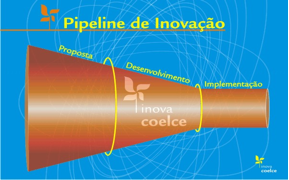
Figure 2: Pipeline of Innovation
However, there were difficulties as other companies have, that apply traditional systems of innovations : a lot of ideas, unfocused Company needs, and little structure to develop and test them. Obviously if they invested more resources in development processes, increase the number of projects at the end of the innovation pipeline. But everything has a cost, and sometimes managers not considered viable. Also occurring cases of employees not fit into the process for consider bureaucratic (many committees for approval steps), complicated to low-level employees (low education) and untransparent, whereas development processes passed through investments, which demanded secrecy information.
For three years, Inova Coelce was tested and came to the conclusion that it was not the ideal to Coelce, which had few financial resources to invest in incremental innovation. Then in 2008, the company spurred studies about new areas of innovation programs and different segments that exist in the sector. Thus, after analysis of internal and external environments, the Deu Certo program was developed.
To solidify the culture of innovation at the company, several changes were made over the past five years, to allow achieve the high level of maturity and recognition of Coelce´s Innovation System. But one of the main authors in this process, was the figure of the CEO. Setting up as a major "Advertisements Man", the CEO inspires people to continue their journey of collaborative creativity, bringing with ideas for all departments of the company, without worrying about not being recognized if they do not move forward in the process. The culture of encouraging people to minimize own mental blocks, that may have functional deconstruction to not contribute to innovation, is one of the key steps in the cultural process.
And the impact of these changes can be seen in the numbers: in five years, were presented over 370 projects tested, on the program, with 1365 employees participation. Over the past four years, the proportion of new registrants without keeps close to 75%. This indicates that each year, the program receives new followers.

Figure 3: Participations of Employees
The Deu Certo program is a methodology that challenges Coelce employees and outsourced companies employees to Coelce to develop incremental innovations with resources of their own areas. The environments of incentives for creativity and innovation were supported with many attitudes and procedures that would encourage people to participate in the program.
Unlike of Inova Coelce, Deu Certo Program allows the division of responsibilities for innovation among all areas of the company or on people. It allows the company, develop its innovations simultaneously. The role of Innovation Area, to becomes only to managing the enabling environment for innovation. This directs the focus of Innovation Area, in management tools to support innovation for operational areas. For this, the decentralization of resources was instrumental in the process, because the chief of the area, can to invest in innovations that believes effectively going to generate results, for their employees. Unlike the technological innovations, ie the medium and long term, incremental innovation have is premised solutions on short and medium term, because the are continuous increments on all processes of the Company. Once the Heads of area are to be responsible for their innovation budgets, they seek to support their teams, to generate creative ideas. Thus, the perception of behavioral change of group, becomes to be evident. All employees of the area, comes to feel "important players" in the process, which generates collective purposes to contribute to the culture of creativity and innovation.
Scope People: How essential pillars of innovation in companies, Coelce employees and outsourced companies employees to Coelce had to be motivated to treat innovation as a means of improving the working environment of the company as a whole. Apply in practice a culture of innovation in people is not an easy mission. It was necessary to insert into annual performance evaluation and individual employees evaluation, the each level of contribution to participatory innovation. This ensures a payback systematic attitudes regarding participation in the innovation competence of each employee.
Anyway it is not enough only encourage financially; recognize the best innovations is crucial. So were inserted recognition procedures for all employees of the company's most innovative pilot projects tested the year. Who makes the recognition is the CEO of Coelce, officially to all company employees. The awards can be certificates, cash prizes and international travel, all expenses paid by Coelce.
But only the financial incentive was not enough to motivate employees to participate in large in the process. Then, came the Coelce Innovation Week consisting of a company event lasting a week. In this event, some innovative people teach the hacks (step by step) for contribution to innovation those who still do not participate in program.
The Week of Innovation consists of outside speakers, but the differential are internal lectures made by employees. In These internal lectures, the subliminal message is that innovation is an attitude coming from all, not by Coelce. It is a purpose that must be followed by all, to improve work and collaborative environments. "Doing good is good," this is the message. Also, it is important to note participation of managers, as they are part the motivational process, "giving the example of the path to be followed, is one of the simplest forms of involvement of the purpose on their teams," this was an affirmation of a Chiefs, who attended the event. CEO Coelce, besides opening the event, participated intensely in many moments, but in a very discreet. The other message to be passed: "to do innovation, we must all be equal, because the creative mind, can sprout in moments more unusual." With this, the Innovation Week has set as point of time, that people can to reflect on attitudes innovative, held throughout the year.
Worked the financial part of recognitions and collaborative work missing part of the aggregation of knowledge is one of the pillars for generating creativity and is directly linked to innovation. Are conducted "internal development courses" for people to understand better and systematically the existing problems in the company. But it are not only the internal development courses, that motivate employees to seek solutions. The innovative feature have the power of direct people, for to seek to do better the things, in their area or even in your personal life. Once, if they no found problems in your area, that person is encouraged to find solutions, for problems of other area (Innovation Collaborative). It´s possible, for example, with participation on Strategic Team (existing to solve challenges corporative). Everyone is encouraged for to be part of the purpose of "Doing well, because Makes Well. " Encouraging employees to seek to have "sharp eyes" for issues yet undetected, are skills encouraged in the company. Without this understanding, lacked the motivation to justify the way they want to innovate. With all these points shown, the equation was set ideal for Coelce: Purpose + Knowledge + Creative Attitude = Creativity + Inspiration (problem) = Idea + Proactivity = Innovation + Attitude (Entrepreneurship) = Applied Innovation Disseminated.
Another important point was the natural direction of contributions of innovation on a large scale, ie, the model produces more botton-up participation, with the base of the pyramid, that the top-down model. Involving staff from the base of the pyramid, was extremely higher because they are viewing and experiencing, the problems operating in the field, ie, they are laying "hands-on". With the manager encouraging, these employees earn inspirations to contribute to the process. Therefore, the Culture of Innovation Incremental Coelce, started to generate a lot of value for the Company, because innovations short / medium term should be generated at any time, and in a non-linear, ie, it has to be exponential. And this is only possible if all the employees are many involved, ie, at every moment, them have purpose to improve.
With this, we generated three ideal environments for innovation, which should be based on corporative programs that encourage Knowledge (training programs), Purpose (financial incentive or not financial incentive), Inspiring Attitude (Innovation Week and Encouraging of Managers), Inspiration (CEO Acknowledgment and attitude to solve a problem why does it well), Proactivity (financial incentive) and Attitude (Innovation Week and CEO Acknowledgment).

Figure 4: Environments for Creativity, Innovation and Entrepreneurship;
Scope for Strategy and Processes: In addition to encouraging employees, Coelce needed to be prepared to develop and manage the internal innovation process. For this, the Innovation Competence must be inserted in the values of the Company's strategy, creating value gains and feedbacks on to the Annual Strategic Reflections. Thus, since 2005, the company has a Committee chaired by the CEO, specific to innovation, which occurs monthly. Also since 2005, was created to manage the a specific environment innovation conducive to innovation culture. But needed were still the creation of indicators and targets to justify the inclusion of the topic, as differential pillar. So, since 2006, the area of innovation have goals/targets, and since 2011, employees from all departments, has behavioral goals/targets for innovation. For Processes, two innovation programs have been developed to create environments conducive to participation of employees, focused on incremental innovation (continuous improvement): “Deu Certo” Program and “Bolsa Coelce de Inovações” Program. The first program is the management of an environment for encouraging, by solidification of Culture of Innovation Company, highlighting the best projects of innovation, that were developed by employees and contractors, per year. The second Program complements the circle of innovation, creating an enabling environment for dissemination and implementation of innovation projects.
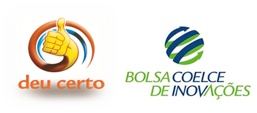
Figure 5: Logo´s Programs
Deu Certo Program was created to address these operational difficulties, give greater transparency to the process and have more objective and effective results. To design a process with these purposes, the department of innovation, created a group of employees by others departments, to visit several group companies in Latin America. The visit was to see many different program´s innovations from other segments. None of benchmarkings seen, had the need of the desired shape. When was made further visits in Japanese industries, with headquarters in Manaus City (Brazil), of automotive industry (motorcycles) and electronics, there was seen a program to encourage continuous improvement, which could be refurbished and adjusted to an electric utility, with high regulatory restrictions. With this, we created a multidisciplinary team within the company, to design, from the beginning, the process flow of the program.
Focusing on incremental innovations, was the first premise of the Deu Certo Program, for to have more effective results (greater number of ideas built and tested), as little effort as possible in its management. For this, the Deu Certo Program starts their assessments only already pilot projects tested, not ideas. Second premise: all projects entered must have, necessarily, a team of five employees fixed, not less or more. The understanding is that the employees themselves, evaluated their own idea. So after, they build (pilot) it and test it before you enroll in the program design. Before starting the first round of registrations, us had doubt about financial resources needed to develop their pilots of ideas, because the pilots would be funded by the areas where teams work, or the areas benefited by the results of the project. But that led to another benefit, better selectivity of the ideas that the teams would works to develop the pilots. Anyway, next steps for pilot projects, was discussed in filters reviews, the financial viability versus benefit. Today, with the program, these assessments are already made by the team, before register the project in the program. Also there to emphasize that, as continuous improvement, one of the goals of the program is the development of products / practices with good return on value versus cost applied. Thus, the teams began to focus on low cost projects or easy application. To improve the analysis and development, trainings are held to be having a critical knowledge within the company.
The system works as follows: Are opened enrollment periods for projects. During this period, all employees and partners can register their projects on program website. Only tried and tested ideas are accepted and can be pilot projects. Soon after the registration period, there is a time for teams to adjust their writing projects (preliminary results), to be presented in Evaluation Group Review, for pre-classification, formed by former employees. Jurors are former employees, retirees recently, precisely because they know the process and the reality of the company as a whole. Jurors are funded for the services, to give equality to the evaluation process.
After analyzing the projects are rated "X" for a final project cycle, which will be analyzed by the President and Directors of the company. In this, they are classified "Y" teams for the end of the year. These "Y" projects will be re-examined, along with the winning designs of the other two cycles, in the year. The teams ranked in the first cycle can and should improve their designs for the end of the year, thus creating a competitive advantage for the teams ranked on last cycle. But the idea is precisely this, the sooner the company to apply its innovations, better. Therefore, the time factor is important. Also for these teams ranked in the first and second cycle, they also participate in meetings with the area that manages the program for the same financially support the improvement and further testing of its pilots. Figure below shows the timeline of the process as a whole.

Figure 6: Steps of Deu certo Program
For each step that have advance of projects, project’s teams are recognized. Winners are announced in this Christmas Party of the company on year, what happens to all employees and partners, offered by company. A large symbolic check is delivered. This practice generates a large movement and comments, by employees, about project and teams.
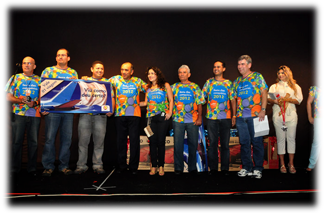
Figure 7: Award Ceremony of the champions teams of the year (Award: International Travel), in Christmas Party of company, that had the presence of more 5 thousand invited people.
In 2011, the company launched the "Bolsa Coelce de InovaAções." The "Bolsa Coelce de InovaAções" aims to encourage the implementation of the projects presented in the program “Deu Certo”.
The program works like a stock exchange, where you win more when a project is deployed in less time and cost. That systematic by program is described below. In Figure down, one can see the timing of the program.
Figure below: Chronology of the Program.

Figure 8: Steps of Bolsa Coelce de Inovações Program
Step 1: The teams that presented their projects on Deu Certo Program, can register their projects in the new Program during the IPO (Initial Public Offering) window. The projects registered on IPO, begin to be called companies. In this section, teams will adjust your registration details and additional data from their projects.
Step 2: After completion of the IPO window, the window begins Investment. When you open the window period of Investment, developers and partners can join the site in order to realize their investments in the projects entered in Step 1 (IPO Window). Each employee and / or partner will receive 1,000 (one thousand) to $ COELCE investments, which can be used in this PERIOD or on next. In this WINDOW, investors can contact the teams to check the progress of project implementation.
Step 3: After finishing the Window Investments, begins the period of recovery window. At this moment, the departments of Coelce inform, via the system, which projects registered were deployed in their areas.
Step 4: After completing the recovery window, starts the period from CLC window (Moment of Clearance and Custody). In this, the points earned will be recorded by the Company, and the appreciation and depreciation of investments made by investors during the window of Investments. In this time, have the return´s investments by investors, valued or devalued. They can be reinvested in the next PERIOD or saved to exchange prizes at the end of the year.
With the process, we perceive the involvement of investors, with roles of "Contributors for Result", because the valuation of its shares, is directly correlated with the success of implementation / dissemination of projects (company), on all possible areas of deploy it. This investor, start to contacting the Project Leader, questioning whether he had implemented the project, and in what areas. This generates a "healthy psychological pressure" to the Project Leader, for to implement it more quickly. There are cases in which the Leader, search the support of investors, to deploy your project. For example, for the Project "Card for Check-Up Tire", which is simply a paper card, which indicates whether the tire of the car needs to be changed or not, the leader tried talk with all drivers of the company, to be investors. He knew who if all drivers, effectively are using the cards, then nothing better than to involve them in the implementation of the project. This is a case where everyone wins: Investors, Leader Project, and Coelce.
Another relevant point is that, once invested in a company in a period, the investor that realize that the project (company) that him invested, is already deployed in all areas, him (investor) can redirect their investments to another project, that him think that has potential for deployment, in next period . For investor, its value to make more COELCE$, is the variation of deployments in a given period. Therefore, the time factor of deployment is very important in the game. Among the gains of investors at the end of the year, the COELCE$ valued can be exchanged for prize available on website. To the head of the area that has more projects implemented in the year, wins a cash value, to hold a party with your entire team. In any case, everyone wins: Leader Project (company), investor, management area, and Coelce, with the proceeds from the deployments of incremental innovations, more cost-effectively and in a shorter period of time.
Scope for Value Creation: After the Scopes worked for People, Processes and Strategy, Value Generation (Results), have the result of the innovation´s culture. The results are detailed in the text below, but one of the biggest gains, is the change of behavior of every employee, with the transparency of innovation´s subject.
The model also allowed for a more careful analysis for radical ideas of employees. This is possible because once created new ways for paths, that listen better the contributions of ideas, the body managing of company, can decide which it better which way that idea can to do to go to better cluster of development. These once identified that radical idea can´t be developed and implemented by operational areas, the company's management can to point ways for the Department of Innovation put on Technological Innovation Processes. Other option is put on Investment Committee, which analyzes investment projects with values greater than the available capacity by operational area.
Since the implementation of Inova Coelce Program, challenges were imposed for Coelce, that had to seek solidify the Culture of Innovation, for all areas of the company and its partners (providers service). Overcoming challenges: since clarification of the basic concepts of innovation until for to a recognition of the concrete "value gains", generated by products and processes implemented in the company, were paths traveled over 7 years of experience. However, the company had to direct your "ship" for best seas, where have good environments prospects propitious for the cultivation of creativity. With these concepts, Incremental Innovation horizons can be have term of short / medium time, with goals more likely to be achieved, different from Technological Innovation (R&D: research and development), that demands more time and enhanced effort . Among the challenges for the next three years to Incremental Innovation, we highlight:
- Increase the participation of employees of companies providing services Coelce, of 10% to 30%;
- Extend the concept of the program to customers and consumers (Open Innovation Program for Consumers and Customers);
- Solidify Innovation Collaborative Culture of via Social Networks, without need financial acknowledgments;
With Incremental Innovation programs, today have 273 pilots projects: developed, tested and evaluated, in five years. They have financial synergies gains in the order of 22 million dollars since 2008, and other results difficult to measure, as intangible gains of safety of operations, time, human resources...
But one of the main results is the change in attitude, behavior and vision of the people, with the theme of innovation. Innovation for Coelce, is already one of the pillars for sustainable development, and was inserted into the strategic context (2012 - 2015). In 2011, Coelce was recognized as one of three companies in Brazil with better process Innovation Management at National Innovation Award (PNI), sponsored by CNI (National Confederation of Industry of Brazil), and supported by FINEP (Financier of Studies and Projects, a public company with the mission to promote and finance innovation and scientific research in Brazil). And in 2012, the company is in the ranking of Best Innovator (The Award is organized and promoted by consultancy AT Kearney and the magazine "ÉPOCA NEGÓCIOS"), between the 20 most innovative companies in Brazil, and is a finalist for the National Innovation Award 2012 (PNI).
For other awards, highlight: four times regarded as the best followed Electricity Distributor of Brazil (ABRADEE), three times the distributor with best quality perceived by the customer, the CIER prize, Winner of the National Quality Award (PNQ) 2011 and Premio Iberoamerican Quality 2012, among others.
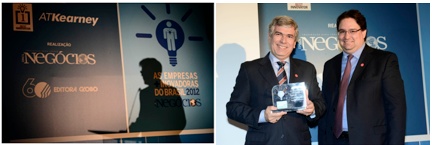
Figure 9: Abel Alves Rochinha, President of Coelce, receiving the prize.
For new managers wishing to implement a solid culture of innovation in their companies, the trick is to understand well its stakeholders to know their real needs. Therefore, adjust the Innovation programs that best fit the needs.
For this, some fundamental questions should be reflected:
- Who is the consumer of their innovations?
- Who is the client of innovation area?
In this case, the consumer is they enjoy the benefits. Customer is one who contributes in building innovation. To innovate in the "Bottom of the Pyramid" of company, generally consumers are the customers, then the incremental innovation gains much importance in context.
Coelce – Companhia Energética do Ceará;
Working in a company that encourages and acknowledges its collaborators is an aggregation and decisive point for us to make the difference everyday, to inspire us and to overcome our challenges with creativity and innovation. This is the work environment of Coelce, that has been growing with the opportunities created by the company for us to present and implement our ideas. Deu Certo is a program that makes this practice possible. I've participated in its first edition. With the creation of Bolsa Coelce de Inovações this program is now complete, because it encourages the dissemination of current projects to the entire company. Here we have the opportunity to make things happen! Congratulations!
- Log in to post comments
Thanks for your the comments, and emphasize the importance of employees participation, in our innovation process.
- Log in to post comments


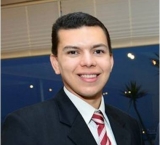
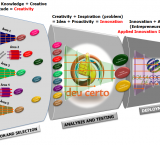
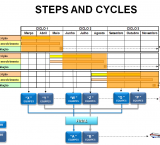


You need to register in order to submit a comment.